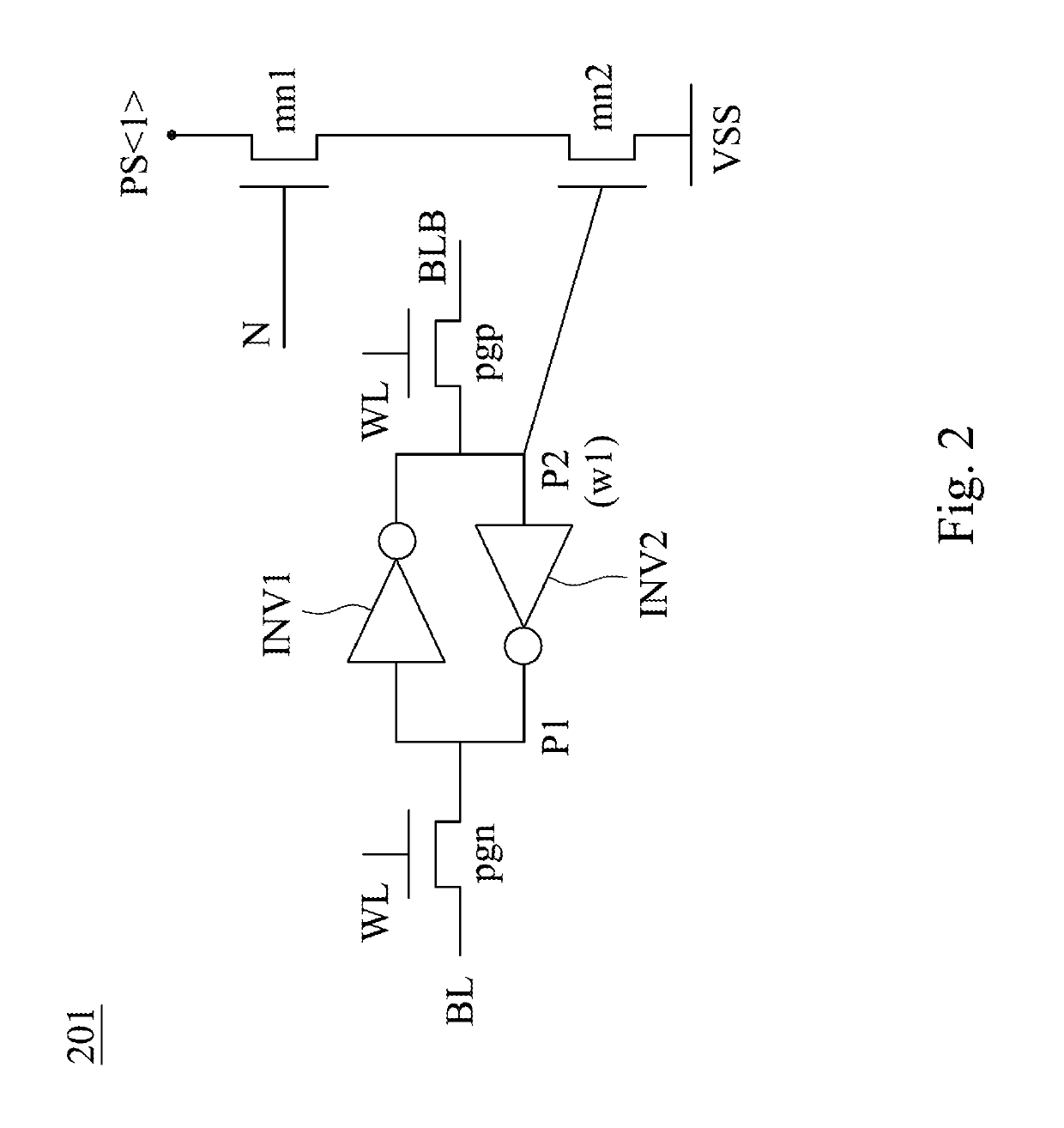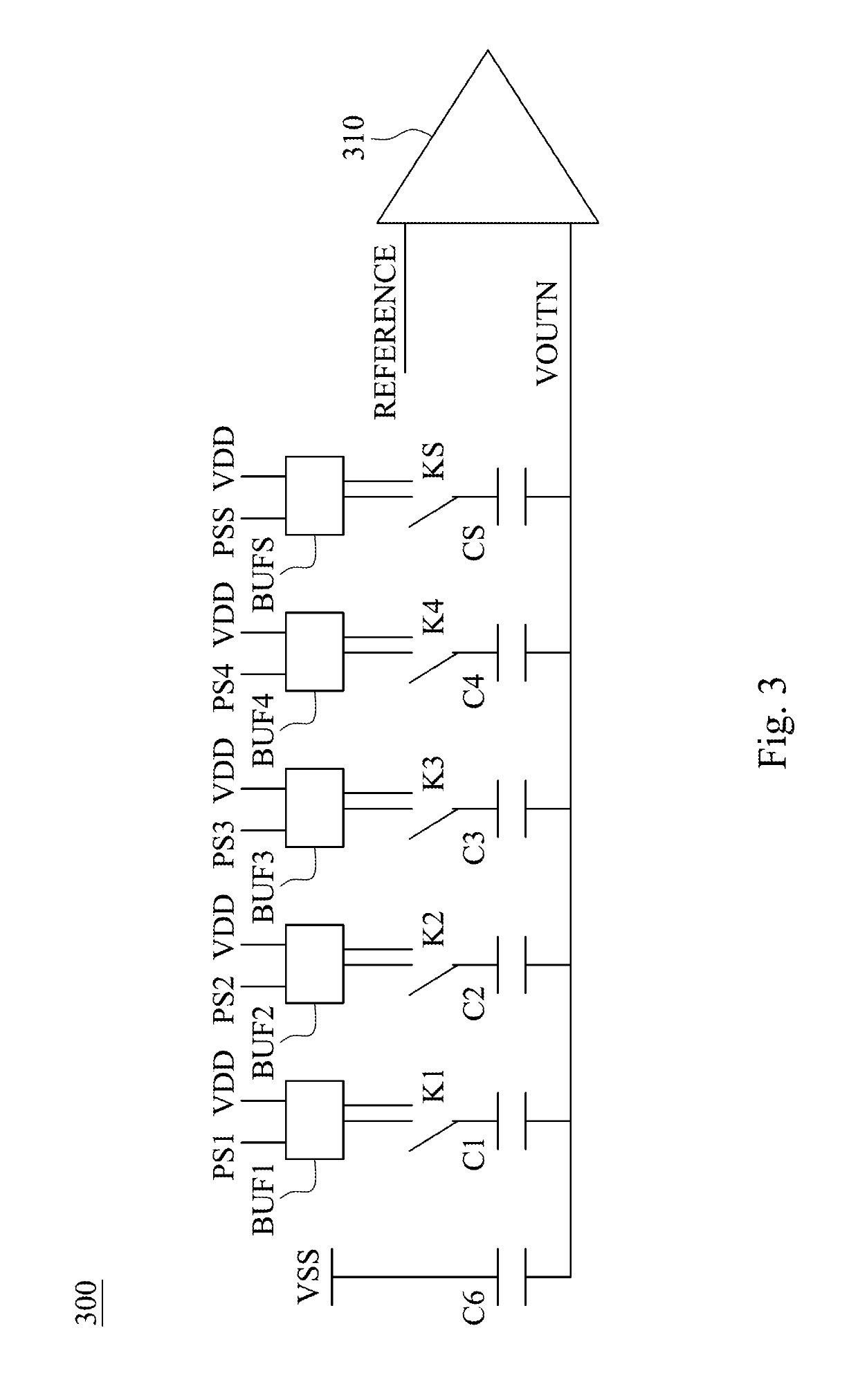Multi-bit computing circuit for computing-in-memory applications and computing method thereof
a multi-bit computing and application technology, applied in the direction of information storage, static storage, digital storage, etc., can solve the problems of large overhead, write disturb, and inability to realize both negative and positive weights in the same bl
- Summary
- Abstract
- Description
- Claims
- Application Information
AI Technical Summary
Benefits of technology
Problems solved by technology
Method used
Image
Examples
Embodiment Construction
[0015]FIG. 1 shows a block diagram of a multi-bit computing circuit 100 for computing-in-memory applications according to one embodiment of the present disclosure; FIG. 2 shows a circuit diagram of a memory cell 201 of the multi-bit computing circuit 100 for the computing-in-memory applications of FIG. 1; FIG. 3 shows a circuit diagram of a capacitor sharing unit 300 of the multi-bit computing circuit 100 for the computing-in-memory applications of FIG. 1; and FIG. 4 shows timing diagrams of voltages of the switches K1, K2, K3, K4, KS of the capacitor sharing unit 300 of FIG. 3. The multi-bit computing circuit 100 for the computing-in-memory applications is controlled by a first bit line BL, a second bit line BLB, a word line WL and an input port N. The input port N transmits an input value which is a multi-bit input value. The multi-bit input value is given sequentially via the input port N. The multi-bit computing circuit 100 for the computing-in-memory applications includes a mem...
PUM
 Login to View More
Login to View More Abstract
Description
Claims
Application Information
 Login to View More
Login to View More - R&D
- Intellectual Property
- Life Sciences
- Materials
- Tech Scout
- Unparalleled Data Quality
- Higher Quality Content
- 60% Fewer Hallucinations
Browse by: Latest US Patents, China's latest patents, Technical Efficacy Thesaurus, Application Domain, Technology Topic, Popular Technical Reports.
© 2025 PatSnap. All rights reserved.Legal|Privacy policy|Modern Slavery Act Transparency Statement|Sitemap|About US| Contact US: help@patsnap.com



